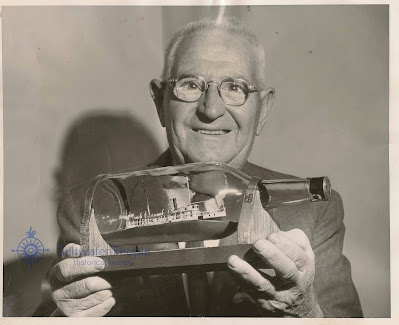The Surfside 9 restaurant, 900 Westlake Avenue, sank in Lake Union this day and was resting with one side on the bottom in about 24-ft of water.
A cook, Douglas Leach, 23, discovered the craft sinking this morning when he arrived at work about 9 o'clock.
Pumps, which normally pump leakage from the bilge, were not operating.
Soon the dining room, kitchen, and bar were flooded with water that reached table-top level.
Police Patrol boats were sent to the scene. A fire boat was called to try to pump water out of the restaurant, owned by Union Enterprises and operated by George Nelson.
Nelson said City Light had turned off power to the boat two previous because of an unpaid light bill.
Nelson said:
"We went to City Light yesterday and told them we had the money, but they wouldn't come down. The electric pumps which normally pump water from the bilge weren't working."
Nelson said that if the power had been on, the bilge pump probably would have kept the boat from sinking.
He declined to estimate the damage but said the restaurant would operate again.
City Light restored power, but too late for the bilge pumps to do any good, Nelson said.
Police said cables holding the boat to a pier probably prevented it from rolling over. They said their pumps were making little headway. They doubted the boat could be refloated with the equipment they were using.
As policemen attempted to pump the boat out, a piano floated around in the cocktail lounge and tropical fish swam in a glass container just a few inches above lake water within the boat.
In her prime, she carried 400 passengers and 40 automobiles.
1967: Seattle diver Leiter Hockett raised the Surfside 9 to be purchased by A.W. (Monty) Morton for his Youth Services. After several months of cleaning and refurbishing by the young people of Morton's organization, the old vessel sank at her moorings again and gradually disintegrated.
She sank one day before a scheduled dry-dock rehabilitation that would have guaranteed the 68-year-old boat further service as a youth center.












